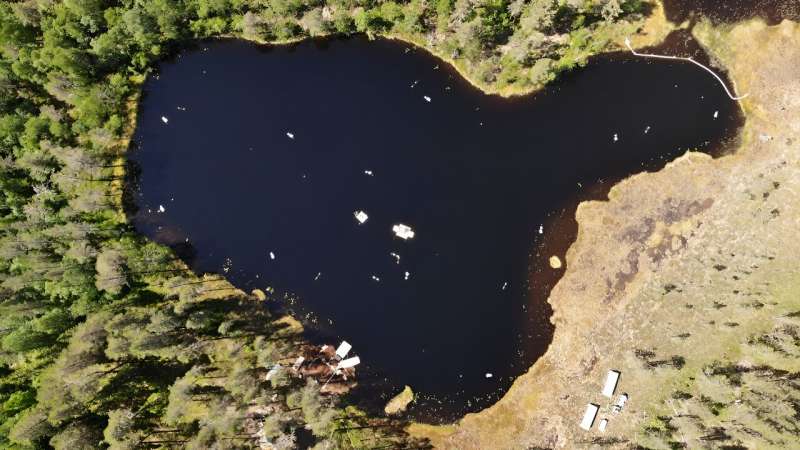This article has been reviewed according to Science X's editorial process and policies. Editors have highlighted the following attributes while ensuring the content's credibility:
fact-checked
proofread
Adding oxygen to a lake to explore methane emissions

Lakes around the world emit methane to the atmosphere, accounting for up to 19% of total global emissions of this potent greenhouse gas. Most of the methane in lakes comes from microbes in the lake bed that consume dissolved organic matter for sustenance and release methane as a waste product. This process typically occurs in low-oxygen conditions; in environments with more oxygen, microbial metabolic processes that do not produce methane tend to dominate.
The dynamics of methane emission from lakes are still being worked out, and scientists typically rely on small-scale experiments conducted in bottles or enclosures that merely mimic lakes. However, in a new study, Gustav Pajala and a research team report the results of a rare ecosystem-scale experiment conducted in a small boreal lake in northern Sweden.
The researchers selected the lake because it has two connected basins. In the summer of 2019, they injected oxygen into the deeper waters of one basin. The other basin was left alone, resulting in natural low-oxygen levels in deep waters. They measured methane emissions from both basins to better understand how dissolved oxygen affects emissions. The study is published in the Journal of Geophysical Research: Biogeosciences.
In line with the researchers' expectations, only a small amount of methane accumulated in the basin with added oxygen, whereas more methane accumulated in the low-oxygen waters of the control basin. However, little of this accumulated methane was released to the atmosphere in summer months, contrary to expectations from prior research.
In addition, the lakes only partially underwent the autumnal and springtime mixing of shallower and deeper waters that typically results in significant methane emission. Further calculations suggested that a maximum of 24% and as little as 0% of the methane in the lake was released during seasonal mixing. The rest was consumed by a special group of microbes that use it for energy, providing an important ecosystem service called microbial methane oxidation.
These findings suggest that in some cases, low-oxygen conditions may have a smaller impact on methane emissions from lakes than previously thought and that from year to year, emissions may vary widely because of different degrees of seasonal mixing. Further research is needed to better understand this variability and its implications for climate change.
More information: Gustav Pajala et al, The Effects of Water Column Dissolved Oxygen Concentrations on Lake Methane Emissions—Results From a Whole‐Lake Oxygenation Experiment, Journal of Geophysical Research: Biogeosciences (2023). DOI: 10.1029/2022JG007185
Provided by Eos
This story is republished courtesy of Eos, hosted by the American Geophysical Union. Read the original story here.


















